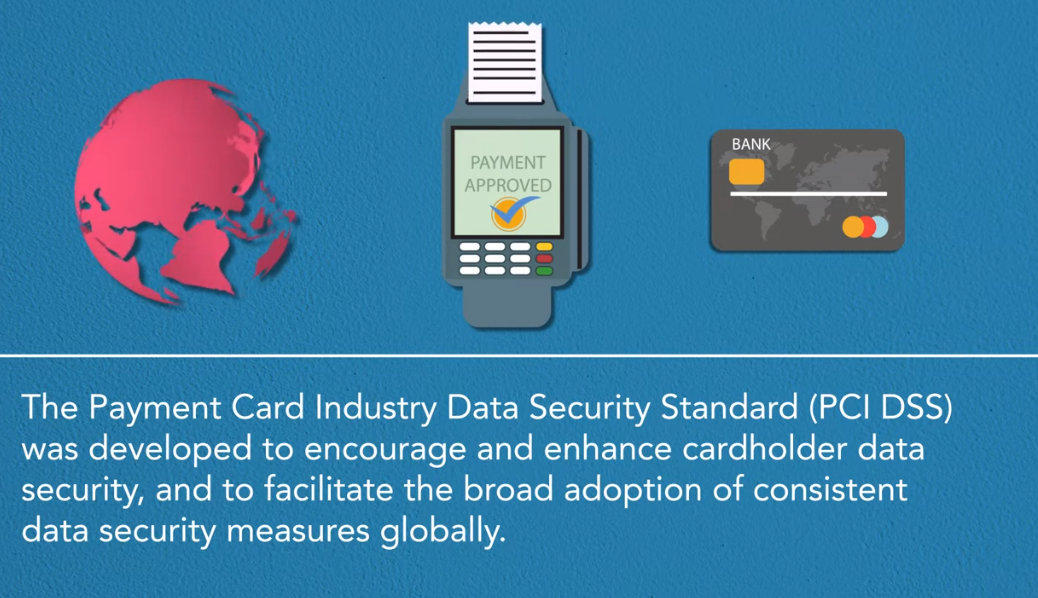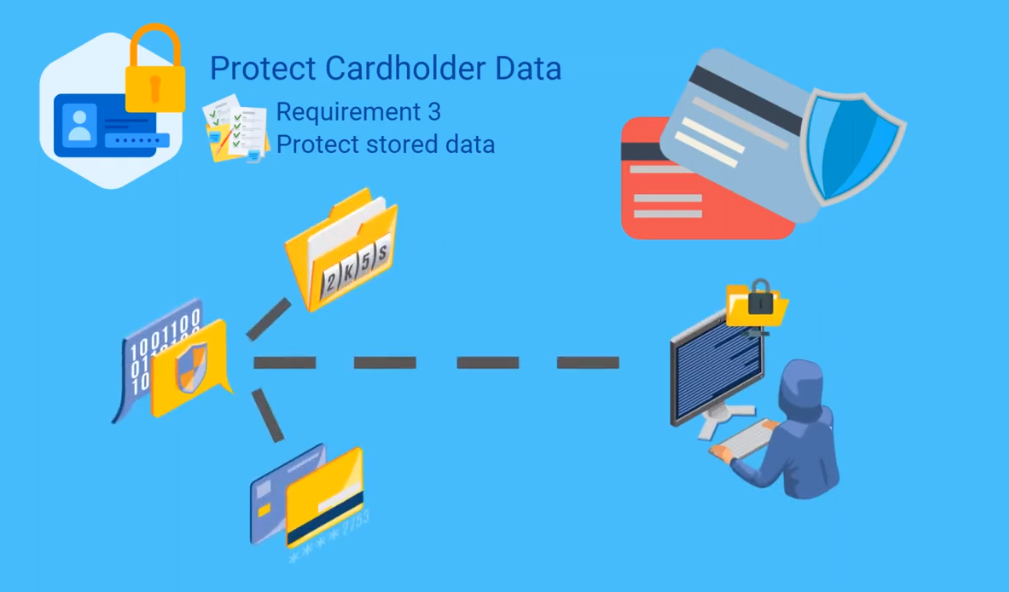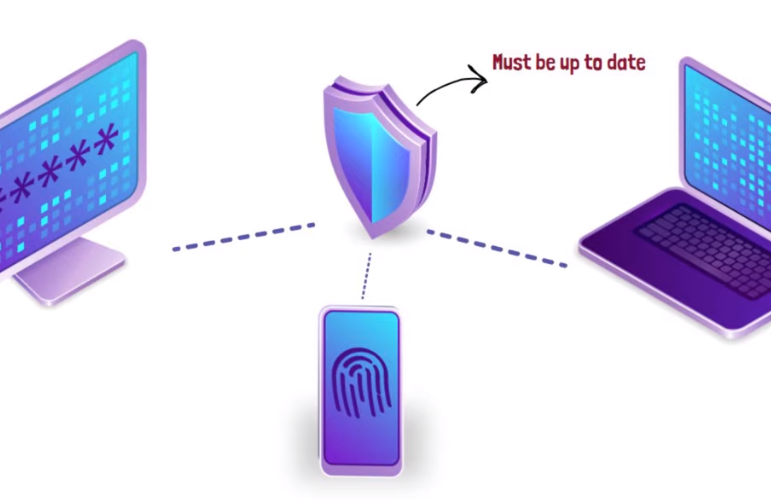Introduction
The Payment Card Industry Data Security Standard (PCI DSS) is a set of security requirements established by major credit card companies to protect sensitive customer data. These requirements apply to any organization that accepts credit card payments, including banks. One important aspect of PCI DSS compliance is physical protection, which involves safeguarding the physical environment where customer data is stored and processed. This article will explore the importance of physical protection in meeting PCI security requirements and safeguarding banks’ customer data.
Complying with PCI security requirements is crucial for any organization that admits credit card payments, including banks. Failure to obey can result in fines, legal liabilities, and reputational damage. Additionally, non-compliance can lead to data breaches and the loss of sensitive customer data, which can have severe consequences for the bank and its customers. Physical protection is essential to PCI DSS compliance because it involves securing the physical environment where customer data is stored and processed. This includes securing access to restricted areas, such as server rooms and data centers, with appropriate access controls, such as biometric authentication and surveillance cameras. It also ensures that any paper documents containing sensitive customer data are properly secured and disposed of when no longer needed. Another important aspect of PCI DSS compliance is network security. Banks must implement strong firewalls and encryption protocols to protect customer data from unauthorized access and cyber-attacks. This includes regular testing and monitoring their networks for vulnerabilities and promptly addressing issues.
Finally, banks must train their employees on PCI DSS compliance and best practices for handling sensitive customer information. This includes providing regular security awareness training and enforcing strict access controls to limit employee access to sensitive data. By implementing these measures, banks can help protect their customer’s sensitive information and maintain compliance with PCI DSS standards.
Which PCI Security Requirement Relates To The Physical Protection Of A Bank’s Customer Data?
PCI Security Requirement 9 relates to the physical protection of cardholder data. This requirement includes measures such as restricting physical access to data, implementing secure storage and disposal of data, and maintaining monitoring and tracking of all access to data. It also requires regular testing and review of physical security measures to ensure they effectively protect sensitive data.
Understanding PCI DSS

PCI DSS (Payment Card Industry Data Security Standard) is a set of security standards major credit card companies created to protect cardholder data. The standard includes requirements for network security, encryption, access control, and regular monitoring and testing of security systems. Compliance with PCI DSS is mandatory for all organizations that accept credit card payments, and failure to comply can result in fines and other penalties. Businesses must understand and comply with PCI DSS to protect their customers’ credit card information and maintain their reputation as trustworthy organizations. Complying with PCI DSS can also help businesses avoid potential data breaches and financial losses. To ensure compliance with PCI DSS, businesses should work closely with their payment processors and implement security measures like firewalls, anti-virus software, and secure data storage. Regular audits and assessments should also be conducted to identify and address any liabilities in the system. By prioritizing PCI DSS compliance, businesses can demonstrate their commitment to protecting.
Physical Protection Requirement
The Physical Protection Requirement of PCI DSS is designed to prevent unauthorized access to cardholder data by implementing physical security measures. This includes controlling access to physical areas where cardholder data is stored or processed, such as data centers, server rooms, and point-of-sale terminals. To comply with this requirement, businesses should implement access controls such as locks, biometric scanners, and security cameras. They should also restrict access to cardholder data to only those workers who require it to do their job duties.
In addition, businesses should ensure that any devices used to store or process cardholder data are physically secured and cannot be easily removed or tampered with. This includes laptops, mobile devices, and other portable storage devices.
By implementing these physical security measures, businesses can reduce the risk of unauthorized access to cardholder data and protect their customers from potential fraud and identity theft.
Physical Security Measures
Physical security measures are essential to protect sensitive data from theft or tampering.
Here are some best actions that businesses can implement:
1. Secure storage: All devices storing or processing cardholder data should be physically secured. This includes servers, point-of-sale (POS) terminals, laptops, and mobile devices. Businesses should ensure that these devices are locked up when not in use and that only authorized personnel can access them.
2. Access controls: Businesses should implement access controls to prevent unauthorized access to sensitive data. This includes using strong passwords, two-factor authentication, and limiting access to only those who require it.
3. Video surveillance: Video surveillance can help deter theft and provide evidence in case of a security breach. Businesses should install cameras in areas where sensitive data is stored or processed.
4. Alarm systems: Alarm systems can alert businesses to unauthorized access attempts or physical breaches. Businesses should install alarms on doors and windows and ensure they are regularly tested.
5. Shredding: Businesses should shred any documents that contain sensitive data before disposing of them. This includes receipts, invoices, and other paper documents.
By implementing these physical security measures, businesses can protect their customer’s sensitive data and reduce the risk of fraud and identity theft.
Risk Assessment
Risk assessment is a crucial step in ensuring the security of a business. It involves identifying potential risks and vulnerabilities that could compromise sensitive data’s confidentiality, integrity, and availability. This includes thoroughly evaluating the business’s physical security measures, information technology systems, and employee practices. To conduct a risk assessment, businesses should consider the following steps:
1. Identify assets: Businesses should identify the assets that need to be protected, such as customer data, financial records, and intellectual property.
2. Identify threats: Businesses should identify potential threats to these assets, such as cyberattacks, physical theft, or natural disasters.
3. Assess vulnerabilities: Businesses should assess the vulnerabilities of their physical security measures, information technology systems, and employee practices that these threats could exploit.
4. Determine the likelihood and impact of risks: Businesses should determine the likelihood and impact of each identified risk to prioritize their mitigation efforts.
5. Develop a risk management plan: Based on the risk assessment, businesses should develop a risk management plan that outlines strategies to mitigate identified risks and prevent future incidents.
By conducting regular risk assessments, businesses can proactively identify and address potential security threats, ensuring the protection of sensitive data and the continuity of business operations.
Compliance And Certification
PCI DSS Compliance Requirements For Requirement 9

The Payment Card Industry Data Security Standard (PCI DSS) is a set of security standards identified to ensure that all companies that accept, process, store, or transmit credit card information maintain a secure environment. Requirement 9 of the PCI DSS, outlines specific requirements for physical access to cardholder data. To achieve compliance with Requirement 9, businesses must implement policies and procedures that restrict physical access to cardholder data to authorized personnel only. This may include locking doors and cabinets, using access control systems, and monitoring and recording access to sensitive areas. Additionally, businesses must regularly assess their physical security measures to ensure they are effective and up-to-date. Compliance with Requirement 9 is essential for protecting cardholder data and maintaining the trust of customers and partners.
Steps To Achieve Compliance With Requirement 9
To achieve compliance with Requirement 9, businesses should take the following steps:
1. Conduct a risk assessment: Before implementing physical security measures, businesses should conduct a risk assessment to identify potential threats and vulnerabilities to cardholder data.
2. Develop a physical security policy: Businesses should develop a physical security policy that outlines the measures they will take to protect cardholder data. The policy should be disseminated to all employees and contractors with access to sensitive areas.
3. Control access to sensitive areas: Businesses should implement access controls to limit entry to sensitive areas where cardholder data is stored or processed. This can include using keycards, biometric scanners, or security guards to monitor access.
4. Monitor and record access: Businesses should monitor and record all access to sensitive areas to detect unauthorized entry or suspicious activity. This can be done through surveillance cameras, audit logs, or other monitoring tools.
5. Secure physical devices: Businesses should secure all physical devices that store or process cardholder data, such as point-of-sale terminals, servers, and backup drives. This can include using locks, alarms, or other security measures.
6. Dispose of sensitive data securely: Businesses should have procedures for securely disposing of cardholder data when it is no longer needed. This can include shredding paper documents or securely wiping electronic devices.
7. Regularly review and update security measures: Businesses should regularly review and update their physical security measures to ensure they are effective and up-to-date. This can include conducting regular security audits and assessments and implementing any necessary changes or improvements.
Common Mistakes And Challenges

Here are some common mistakes and challenges that businesses may encounter when implementing physical security measures:
1. Lack of employee awareness: Employees may not be aware of the importance of physical security or may not follow established protocols, such as not wearing ID badges or propping open doors.
2. Insufficient training: Employees may not have received sufficient training on physical security measures, leaving them unsure of what to do in an emergency.
3. Inadequate budget: Businesses may not allocate enough resources to physical security, resulting in outdated or ineffective measures.
4. Failure to update security measures: Businesses may fail to regularly review and update their physical security measures, leaving them vulnerable to new threats and risks.
5. Inadequate risk assessment: Businesses may not conduct a thorough risk assessment to identify potential security vulnerabilities and develop appropriate measures to address them.
6. Overreliance on technology: While technology can be an important part of physical security, businesses should not rely solely on it to protect their assets. They should also implement physical barriers, access controls, and other measures to prevent unauthorized access.
7. Failure to comply with regulations: Businesses may fail to comply with relevant regulations and standards, such as PCI DSS or HIPAA.
Benefits Of Compliance
Compliance with regulations and standards can bring several benefits to businesses, including:
1. Improved security: Compliance requirements often include security measures that help businesses protect their assets and data.
2. Reduced risk of penalties and fines: Compliance violations can result in significant penalties and fines, which can be avoided by complying with regulations and standards.
3. Enhanced reputation: Compliance can demonstrate to customers and stakeholders that a business takes security and privacy seriously, enhancing its reputation.
4. Increased customer trust: Compliance can help businesses build trust with customers by demonstrating that their data is handled securely and responsibly.
5. Competitive advantage: Compliance can also give businesses a competitive advantage, as it can be a differentiator in a crowded marketplace where customers are increasingly concerned about security and privacy.
Frequently Asked Questions (FAQs)
What Is The Difference Between PCI DSS Compliance And Certification?
PCI DSS compliance refers to meeting the security standards set by the Payment Card Industry Data Security Standard (PCI DSS). On the other hand, PCI DSS certification is the formal recognition that a business has met these standards and has been certified by a Qualified Security Assessor (QSA). In other words, compliance is meeting the standards, while certification is the official recognition that a business has successfully met those standards.
What Are The Results Of Non-Compliance With PCI Security Requirements?
Non-compliance with PCI security requirements can have serious consequences for businesses. The most immediate consequence is the risk of data breaches and theft of sensitive customer information. This can result in significant financial losses, damage to the business’s reputation, and even legal action. In addition, non-compliant businesses may face fines and penalties from credit card companies and regulatory agencies. These fines can be substantial and sometimes lead to suspending or revoking a business’s ability to process credit cards.
Are There Any Exemptions For Smaller Banks Or Credit Unions?

Depending on the specific regulations and requirements in their jurisdiction, there may be some exemptions or different compliance requirements for smaller banks or credit unions. However, it is important for all businesses, regardless of size, to take data security and compliance seriously to protect their customers and business. It is recommended that smaller banks or credit unions consult with legal and regulatory experts to ensure they are meeting all requirements.
What Are Some Common Physical Security Threats To Customer Data?
Some common physical security threats to customer data include theft, unauthorized access, and damage or destruction of physical records or devices. This can happen through theft of physical documents, hacking into physical systems, or even natural disasters such as fires or floods. Businesses need measures to prevent these threats, such as secure storage and access control for physical documents and devices, backup and recovery plans for data, and regular security audits and assessments.
How Often Should Risk Assessments Be Conducted?
The frequency of risk assessments depends on several factors, like the size of the business, the industry, and the level of risk involved. However, it is generally recommended that risk assessments be led at least annually or whenever there are noteworthy changes in the business or its environment. This ensures that new threats are identified and addressed promptly and that existing security measures are still effective. It is also important to note that risk assessments should be an ongoing process and not a one-time event.
What Should I Do If I Doubt A Breach Of Customer Data?
If you suspect a customer data breach, acting quickly and following established procedures is important. This may include notifying your organization’s appropriate individuals or departments, such as IT or security personnel, and any affected customers or regulatory authorities. It is important to contain the breach as quickly as possible to avoid further damage and to investigate the cause of the breach to prevent it from occurring again in the future.
Conclusion
Complying with PCI security requirements is crucial for any organization that handles payment card information. Failure to comply can result in serious consequences, including financial penalties, reputation loss, and legal action. By implementing and maintaining proper security measures, organizations can protect themselves and their customers from the devastating effects of a data breach. As a writing assistant, I recommend that organizations take PCI compliance seriously and prioritize the security of their payment card data.
It is crucial for banks and other organizations that handle payment card data to prioritize physical protection measures along with digital security measures. This can include installing surveillance cameras, using access control systems, and implementing secure storage solutions for sensitive data. By taking complete access to data protection, organizations can reduce the risk of data breaches and avoid the costly consequences of non-compliance with PCI DSS requirements.
